France was one of the very first signatory nations of the Antarctic Treaty in 1961 and is a consultative party with voting rights able to make decisions about Antarctica.
 France
in Antarctica
France
in Antarctica
History and Activity
France has one of the longest involvements in Antarctica of any country. From the very earliest days of exploration, compelling stories of the Heroic Age, 1900-1922, involvement in the International Geophysical Year IGY, 1957-58, to a number of modern scientific bases going back over 60 years and currently at the forefront of modern research in Antarctica.
Current activity
The French National Antarctic Program is led by the French Polar Institute - Institut Polaire Français Paul Emile Victor - IPEV - originally created as the Institut Français pour la Recherche et la Technologie Polaire (IFRTP) in 1992.
|
Research Station and position |
Summer staff | Winter staff | Occupied | Use |
|
Dumont d'Urville, Terre Adelie -
Adelie Land 66°39.77'S, 140°00.08'E |
120 | 25-35 | 1956 - present | Year round |
|
Concordia (2), Dome C
- Antarctic Plateau 75°06.12'S, 123°23.72'E |
70 | 12-15 | 1997 - present | Year round since 2005. Joint with Italy |
|
Crozet Islands - sub Antarctic 46°25'S, 51°51'E |
60 | 15 | 1962 - present | Year round |
| Kerguelen Islands
- sub Antarctic 49°21'S, 70°13'E |
120 | 60 | 1949 - present | Year round |
|
Amsterdam Islands - sub Antarctic 37°41'S, 77°31'E |
50 | 25 | 1950 - present | Year round |
The Ministry of Research is responsible for providing the budget of the IPEV: approximately Eur 28 million, about Eur 15 million being allocated to scientific, technical and logistical polar activities and Eur 10 million to oceanography.
An icebreaker, the Astrolabe services the Antarctic programme sailing to Terre Adelie from Hobart, Tasmania.
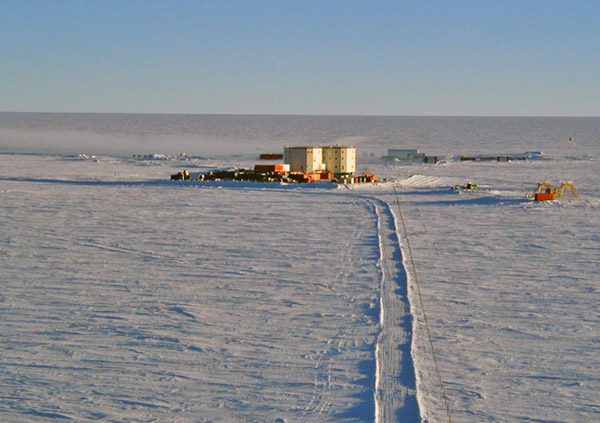 Concordia Station -
joint French / Italian at Dome C 3,000m altitude on the Eastern
Antarctic ice sheet
Concordia Station -
joint French / Italian at Dome C 3,000m altitude on the Eastern
Antarctic ice sheet
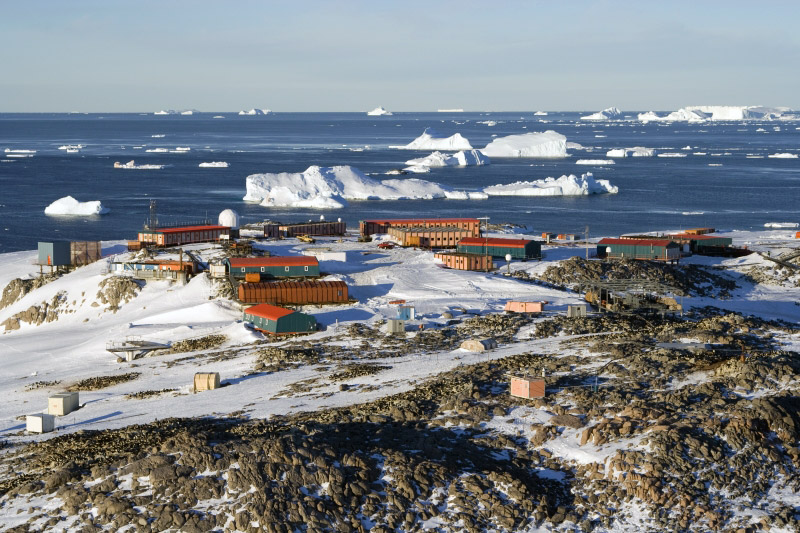 Dumont d'Urville coastal station
Dumont d'Urville coastal station
picture courtesy: Samuel
Blanc, used under CC BY-SA 3.0 license
Website: http://www.institut-polaire.fr/
Early explorations and sightings, pre 1897
![]() 1772 - Yves de Kerguelen-Tremarec
- Fortune and Gros Ventre
1772 - Yves de Kerguelen-Tremarec
- Fortune and Gros Ventre
Sent by King Louis XV to look for the previously reported rich and fertile lands of Terra Australis. He found but didn't land on (due to poor weather and visibility) a sub-Antarctic Island which he called South France, now named Kerguelen. Upon return to France he lied comprehensively about the potential of this land mentioning timber, mines, diamonds and a native population of wonderful physical and moral specimens - none of these things were true. After another expedition leading three ships and failing to find again what he had claimed he found the first time, he was dismissed from service and thrown in prison, quite a nice one though, a small chateau.
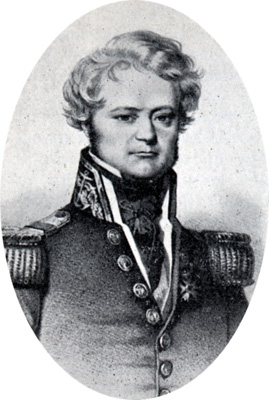
![]() 1837- 1840 - French Naval
Expedition - Jules Sébastian César Dumont D'Urville -
L'Astrolabe and
Zéléé
1837- 1840 - French Naval
Expedition - Jules Sébastian César Dumont D'Urville -
L'Astrolabe and
Zéléé
In 1836 Emperor Louis Philippe of France wanted France to play a part in the exploration of the Southern Seas. British and American whalers and sealers, had been in Southern waters for over 50 years, France had yet to play any active role.
Dumont D'Urville set sail in September 1837 in two ships and on January the 22nd 1838 sighted the Antarctic Peninsula, they named a number of islands and other features though were unable to land due to the pack ice and went north again.
Another excursion was made to Antarctica in January 1840, this time at the other side of the continent in search of the Southern Magnetic Pole. On the 21st of January Dumont d'Urville and a small party landed on an ice free island and named the area Terra Adélie after d'Urville's wife. Seeing a new kind of penguin, he named that too after his wife. At a cost of 22 crew dead and 27 deserted, they had brought back more natural history specimens than had ever been obtained in a single voyage before. Dumont d'Urville's account of Astrolabe's third voyage took up 23 volumes and 5 atlases. More
Heroic Age Expeditions 1897-1922
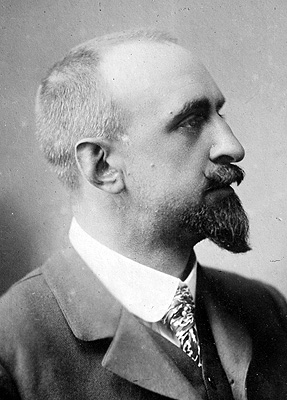
![]() 1903 - 1905
- Charcot - Français -
French
Antarctic Expedition
1903 - 1905
- Charcot - Français -
French
Antarctic Expedition
The ship Français was constructed
initially for the Arctic. The destination was changed by Jean
Baptiste Charcot when Otto Nordenskjold and his ship the
Antarctic went missing in Antarctica. Nordenskjold
and his party had been rescued by the time Charcot reached Buenos
Aries though he continued to the Peninsula region. Engine problems
led to a curtailing of the planned explorations. The winter
was cold and uncomfortable, Charcot's ship was nearly wrecked
the following summer after hitting a submerged rock. Upon return
to South America, the ship was sold in Argentina. Charcot and
his crew returned to France on board a liner. More than 600
miles of new coastlines and islands had been surveyed, 18 volumes
of scientific reports were published.
![]() 1908 - 1910 -
Charcot - Pourquoi-Pas? -
Second French Antarctic Expedition .
1908 - 1910 -
Charcot - Pourquoi-Pas? -
Second French Antarctic Expedition .
Charcot began to plan for his second expedition almost as soon as he arrived back home from his first. Learning from the lessons of the first expedition and now able to attract donations due to his reputation, the expedition was very well equipped. Close to the place where the Français had been damaged, the Pourquoi-Pas? also hit a submerged rock. Another difficult winter followed with Charcot himself showing some signs of scurvy. The results of the second French Antarctic Expedition had been impressive, 1250 miles of coastline and newly discovered territory had been surveyed. The maps made from the expedition were still in use twenty-five years later. The scientific data filled 28 volumes, including some of the 3000 photographs taken during the expedition.
Exploration Scientific Bases and Research after 1922
![]() 1950
- French Antarctic Expedition
1950
- French Antarctic Expedition
The first French station in Antarctica was named Port Martin and was established in January 1950 at Cape Margerie in Adelie Land. In January 1952 this base was severely damaged when a fire burnt down the main building. Fortunately no loss of life or injury was sustained and as it was during the summer period the personnel at Port Martin could be relocated to a newly built station around 60km away on Petrel Island, Base Marret. The now abandoned Marret base is now in Antarctic Specially Protected Area (ASPA) no.166. It is also designated as a Historic Site or Monument (HSM) no. 46.
![]() 1956-58 -
International Geophysical Year
1956-58 -
International Geophysical Year
France was an active participant during this year establishing Dumont d'Urville Station on Petrel Island in Terre Adelie, this has been in constant use since. As well as carrying out scientific research of its own, Dumont d'Urville is an important logistical centre for the supply of Concordia Station which lies deep inland.
![]() +
+
![]() 2005 - Concordia
Base
2005 - Concordia
Base
A joint French / Italian Base built at at altitude of 3,233m above sea level at Dome C, the third highest ice dome in Antarctica and one of the coldest places on earth with an average annual air temperature of -54.5°C.
Territorial Claims
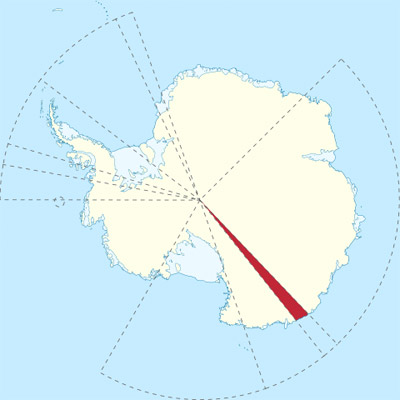 There
is a historical claim by France dating back to 1924 of that
area of Antarctica between 136°E and 142°E and stretching as
far north as 60°S.
There
is a historical claim by France dating back to 1924 of that
area of Antarctica between 136°E and 142°E and stretching as
far north as 60°S.France is one of seven nations that made a claim to land in Antarctica before the Antarctic Treaty of 1961, these being Argentina, Chile, the United Kingdom, France, Australia, New Zealand and Norway. The UK, France, Australia, New Zealand and Norway all recognize each other's claims, these are non-overlapping.
The Antarctic Treaty, Article IV 2 states: "No acts or activities taking place while the present Treaty is in force shall constitute a basis for asserting, supporting or denying a claim to territorial sovereignty in Antarctica. No new claim, or enlargement of an existing claim, to territorial sovereignty shall be asserted while the present Treaty is in force"
So the Antarctic Treaty does not suspend or defer existing claims, though it does state that:
- No activities occurring after 1961 can be the basis of a territorial claim.
- No new claim can be made.
- No claim can be enlarged.
Practically though territorial claims have been effectively suspended since 1961.
Image of claim map used courtesy TUBS, license via Wikimedia Commons
